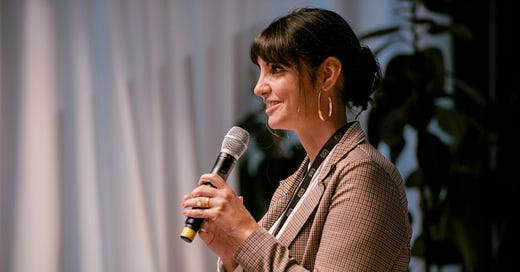Welcome to the WHO Hub for Pandemic and Epidemic Intelligence newsletter! Here we bring you the latest updates on our transformative approach to collaborative surveillance so that countries are better equipped to detect, monitor and manage public health threats.
Each month, we’ll spotlight key projects, share insights from our experts, recommend resources and highlight upcoming events and opportunities.
We look forward to hearing from you! If you have feedback or questions, you can contact us here.
Voices from the Hub
“My name is Yasmin Rabiyan, and I work as an Engagement Officer at the WHO Pandemic Hub. My role focuses on building and strengthening the global community behind the Epidemic Intelligence from Open Sources (EIOS) initiative. Since its inception in 2017, WHO has spearheaded EIOS, which is now the world’s leading effort in leveraging open-source intelligence for public health decision-making.
EIOS complements traditional health surveillance systems by enhancing the early detection of public health threats through publicly available online information in near real-time. The initiative is built on three key pillars: a growing global community of practice, a diverse network of multidisciplinary collaborators, and an advanced and evolving technology-driven system that harnesses open-source data from a multitude of sources, including news reports, social media, and websites that contain public health information.
At its core, the EIOS system is a testament to technological innovation, using advanced algorithms and artificial intelligence to analyze vast amounts of open-source data. However, technology alone is not enough. While it serves as a powerful support tool, its true impact comes from the people who use it. Training and connecting these individuals is crucial to turning technological insights into actionable decisions that reduce health threats.
In my role, I bring together experts and organizations across regions and jurisdictions to address the critical gap in timely, reliable and comprehensive information. Building capacity, collaboration and trust is essential for effectively detecting and responding to public health threats before they turn into bigger crises.
Looking back at 2024, I am proud of the significant milestones we achieved, including expanding our community of practice to over 100 Member States and more than 25 regional and international organizations and networks. Through our global network, we trained over 700 individuals, strengthening global expertise in public health intelligence. At the recent EIOS Global Technical Meeting in Senegal, nearly 200 participants from 70 countries came together to explore advancements in public health intelligence and the EIOS system, exchange experiences and learn from each other.
By fostering collaboration and sharing best practices, we are shaping the future of public health intelligence. I look forward to continuing this important work and expanding the reach and impact of the EIOS initiative.”
📢 Learn more about the EIOS initiative and watch our video about the Global Technical Meeting.
📖 What to read
In today’s interconnected world, infectious diseases can spread rapidly, threatening lives and livelihoods. Contact tracing has long been considered a fundamental strategy to contain and control disease outbreaks and has been used effectively for diseases such as tuberculosis and the Ebola virus. You can now download WHO’s new evidence-based, disease-agnostic guideline to implement effective contact tracing strategies. The guideline provides key definitions, concepts and concrete steps to strengthen response efforts, improve case management and break chains of transmission.
Read and download the publication.
📺 What to watch
Every month, WHO receives over 100,000 alerts of potential health threats. In the latest episode of “Science in 5”, Dr Chikwe Ihekweazu, Deputy Executive Director of the WHO Health Emergencies Programme, outlines how WHO works with Member States and partners to analyze and verify these alerts and coordinates a response where necessary to prevent major crises.
The global COVID-19 pandemic has revealed critical gaps in this global surveillance architecture. To improve the way countries monitor, detect and respond to health threats, WHO has developed a new, transformative approach to surveillance, built on global collaboration and trust.
Watch the “Science in 5” episode and read more about Collaborative Surveillance.
🔁 What to share
If the next pandemic arrived today, the world would still face some of the same vulnerabilities that gave COVID-19 a foothold 5 years ago. But the world has also learned many of the painful lessons the pandemic has taught us and has taken significant steps to strengthen its defences.
WHO’s Director-General, Dr Tedros, shares seven ways in which WHO is helping countries prepare for future epidemics and pandemics, including through the crucial work that is being done at the WHO Pandemic Hub.
Read and share this LinkedIn post on how the WHO Pandemic Hub is a key component to improving pandemic preparedness around the world.
Follow us on LinkedIn
The WHO Pandemic Hub is on LinkedIn! Follow us for regular updates in English and German on how we support public health intelligence communities worldwide with innovative solutions, knowledge-sharing networks and stronger systems for better decisions during epidemics and pandemics.
👉 Follow us and leave us a comment, share or like!







